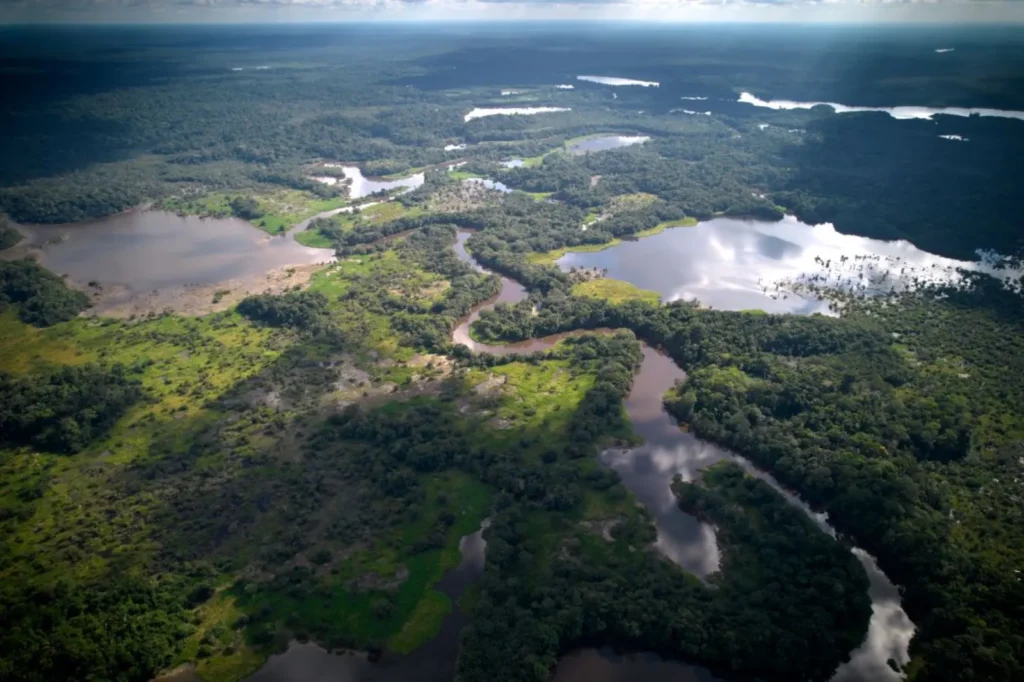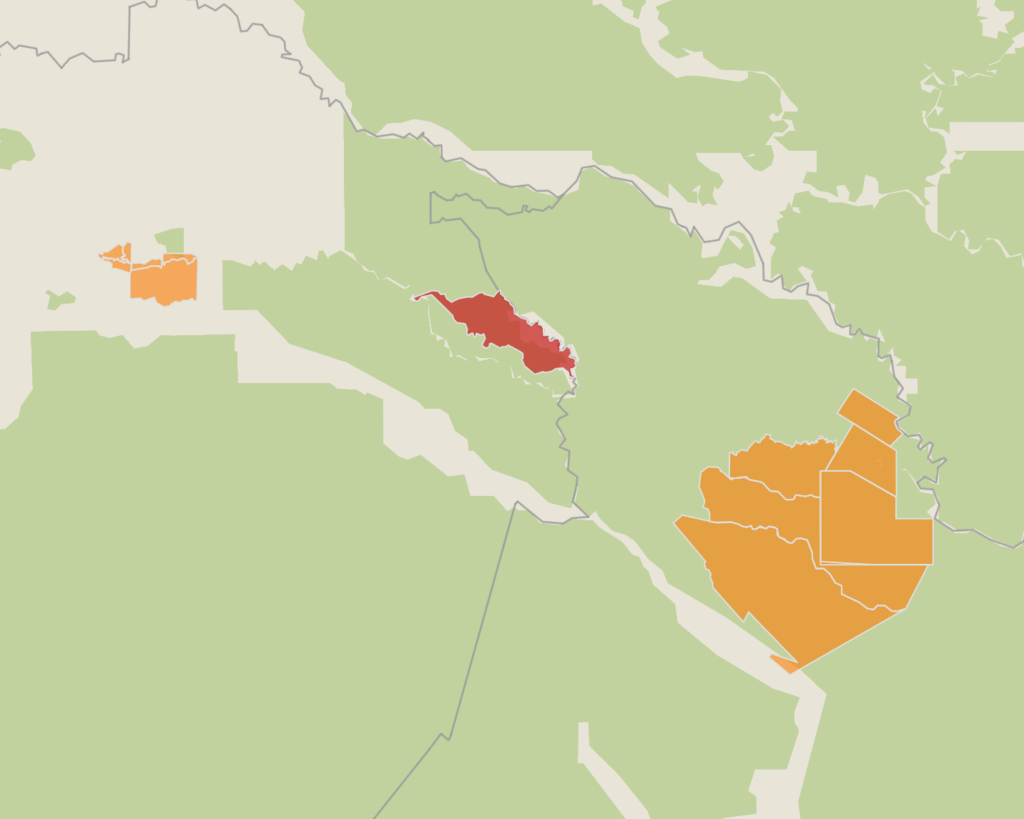This story was originally published in context.news.
___
What’s the context?
Ecuador’s evicted Indigenous Siekopai community are set to return to their Amazon rainforest home, vowing to keep oil drilling at bay
- Ecuador court ruling paves way for Indigenous land titles
- Formalising Indigenous land tenure a key climate solution
- Land is crucial for Indigenous peoples’ survival
BOGOTA – After an 80-year struggle to regain control of their ancestral lands in Ecuador’s Amazon rainforest, the Indigenous Siekopai people are set to return after a historic court ruling ordered the government to grant the community property titles.
Under the November ruling, Ecuador’s Environment Ministry is expected to issue a land title to the Siekopai by April for more than 104,000 acres (42,000 hectares) of land, along with a public apology for violating their rights.
“We’ve been demanding that the government complies with the constitution that recognises ancestral lands are the property of Indigenous communities,” said Justino Piaguaje, a leader of the Siekopai people whose flooded forests – largely lagoons and swamps – are on the border between Ecuador and Peru.
“The ruling is recognition of a historic fight that goes back to our grandparents,” he said.
However, implementing the court ruling could be hampered by the violence convulsing the country that led to President Daniel Noboa last week declaring a war on drug gangs and a state of emergency.
Once the court ruling is carried out, it would be the first time in Ecuador that an Indigenous community, whose ancestral territory overlaps state-protected land, has been given title deeds.

The ancestral heartland of the Siekopai people located along the Lagartococha River in Ecuador’s Amazon rainforest. Credit: Nico Kingman / Amazon Frontlines
Other groups could also benefit from the ruling. More than 3 million acres (12 million hectares) of Indigenous territory are part of Ecuador’s national parks or protected areas and do not have land titles, according to campaign group Amazon Frontlines.
“This is a precedent that opens the door for the defence of all Indigenous territories across the Amazon,” said Jorge Acero, a lawyer for the Siekopai who is part of the Amazon Frontlines legal team.
The Siekopai were forced to flee their ancestral lands during the 1941 Peru-Ecuador war, and later prevented from returning when the Ecuadorian government made the land part of a wildlife reserve in 1979, without the group’s consent.
During hearings at a provincial court, the Siekopai provided evidence of the boundaries of their remote and largely pristine homeland they call Pe’keya in their Paicoca language.
Using cameras, GPS receivers, satellite imagery and aerial drones, the community geo-referenced and documented the extent of their territory and identified sacred sites.
The Siekopai are one of 14 recognised Indigenous groups in Ecuador, with a small population of 800 hunter-gatherers inside the country and 1,200 more in Peru.
Nature conservation
As the world tries to put COP28 climate goals in practice, including a deal to move away from fossil fuel energy, respecting Indigenous land rights and formalising Indigenous land tenure can be a key climate solution, analysts say.
A growing body of scientific research shows that recognising and enforcing land rights for Indigenous peoples, and valuing their expertise and governance systems, are vital for nature conservation and the protection of the Amazon rainforest.
A 2021 U.N. report found that in nearly every Latin American country, Indigenous lands showed lower deforestation rates than other areas.
Scientists say the Amazon rainforest may be close to a tipping point, driven by clearances to make way for agriculture and cattle pastures, which could dry the region and transform it into savannah in the coming decades.
Protecting the world’s largest rainforest, a vast natural store of carbon, can help slow climate change which is powering more heatwaves, wildfires, floods, droughts and storms globally.
Giving land titles to Indigenous groups and bolstering their rights also means it is far more likely oil deposits scattered across Ecuador’s Amazon rainforest will stay in the ground – a key to meeting goals to curb climate change.
Siekopai land is a biodiverse “oasis” home to Amazon river dolphins, giant otters and manatees, surrounded by oil drilling and oil palm plantations, said Piaguaje.
“There’s pressure all around us and … if the state discovers oil on our land the government must carry out a free, prior and informed consultation with us,” he said. “But we’ll never accept or agree to oil exploitation or any type of extractive industry on our lands.”

A three-judge panel listens to oral testimony from Siekopai elders and youth. Courtesy of Karen Toro / Amazon Frontlines.
Returning home
Across Ecuador’s oil and gold-rich Amazon rainforest, other Indigenous groups have successfully pushed back development projects following a series of legal victories.
In August, Ecuadorians voted in a milestone national referendum to ban oil drilling in a part of the Amazon – the Yasuni National Park – home to Indigenous communities, along with gold mining in a forest outside of the capital Quito.
In November, Ecuador state oil company Petroecuador told Reuters it plans to gradually shut down a large drilling project in the Yasuni reserve following the referendum.
Since 2018, Ecuador’s top court has ruled in favour of two other Indigenous groups, the Cofan of Sinangoe, and the Waorani living in the eastern Amazon province of Pastaza, to block the development of extractive projects on their land.
Having land titles allows Indigenous groups greater say and control over their lands and the ability to push back settlers.
“The property title is a way to give judicial security to communities over territories, to guarantee that territories will be respected by the state and invading settlers,” said Acero.
“It guarantees the physical and cultural survival of peoples and nationalities,” he said.
Without reclaiming and returning to their land – seen as central to Siekopai spirituality, memory and knowledge – the risk is that “a millennia culture disappears,” warned Piaguaje.
“The ruling will help us revive our memory and cultural practices, to reconnect with our spiritual world. It allows us to promote our culture that is conserving nature based on millennia of wisdom of our grandfathers,” said Piaguaje.
“We’ll return to rebuild our home,” he said.





